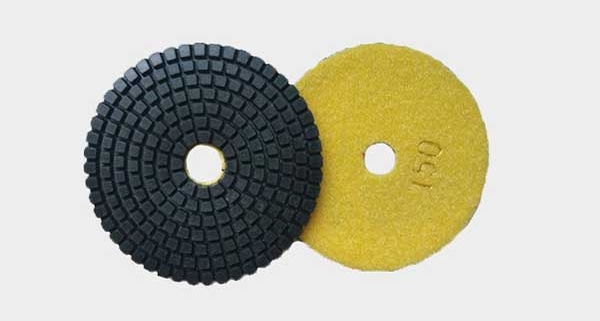The masters who have processed the stone will know that some stones are very well processed, and some stones are very difficult to process because the hardness is too high. Especially in the processing of quartz polishing pad, the hardness of quartz stone can reach Mohs 7, so its plasticity is not as easy as ordinary artificial stone and acrylic, and the processing technology is higher than other artificial stone. There are various problems in processing, how to avoid it?
Quartz stone joints should be spliced with 45° anastomosis. When splicing, the connecting surface must be straightened with a straight knife, and the butt joints can be connected seamlessly. Before connecting, the glue color must be tested first, and the color can be spliced before it can be connected. The remaining glue at the joint is removed by a small blade after the gel is not hard. When the glue is hardened, it is polished and the grinding range is not suitable.
Quartz stone will have a trace like a thread when it is connected, but it is not easy to see without careful observation, and it does not affect the appearance. Mainly open hole: When opening the furnace hole, the bottom of the quartz stone plate should have a backing plate, which can not be suspended, and the bearing force should be uniform to prevent cracking during the opening process due to uneven force. Before opening the hole, first strengthen the four sides and the middle of the quartz stone, and then punch the holes at the four corners of the furnace hole. Then use the wire cutter to cut the square shape slowly and evenly. When cutting, the plate cannot be cut through. It should be divided into two steps. Cut, cut the thickness of the sheet by 1/3, and cut the sheet through the two steps to prevent the sheet from cracking.
After the furnace hole is cut into squares, the angle of the arc of the angle grinder is ground into a circular arc angle. The radius of the arc is not less than R10mm. The back of the four corners of the furnace hole is thickened with a small plate of about 120×120mm, and then grinded into a corresponding angle grinder. The arc is thickened on the four sides by a quartz stone plate with a width of 30 mm or more. The distance between the edge of the furnace hole and the rear water barrier is not less than 70mm.
Look at the edging and chamfering: use hard diamond polishing pad, first 50#, after 150#, then 300#; when polishing with Tianbang diamond water grinding plate, start with 500# polishing pad, then use 800# in turn. Polishing pads of 1000#, 1500#, and 2000# are polished. Note that the diamond polishing pad must be hard and must be emphasized with the supplier. The size of the polishing pad is 3 or 4 inches, depending on the needs of the application. After the use of glue: the original glue of the quartz manufacturer should be used, and the glue must be thoroughly stirred before the glue is used.
The glue curing agent is similar to the ordinary artificial stone curing agent, and the relationship between the addition amount and the temperature is as follows:
(1) when the temperature is below 10 ° C, the amount of curing agent added is 1.5-2% of the glue;
(2) When the temperature is between 10 ° C and -20 ° C, the curing agent is added in an amount of 1% of the glue;
(3) When the temperature is between 20 ° C and -30 ° C, the curing agent is added in an amount of 0.5-0.8% of the glue;
(4) When the temperature is above 30 ° C, the curing agent is added in an amount of 0.5% of the glue.




